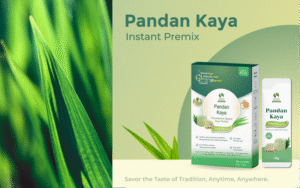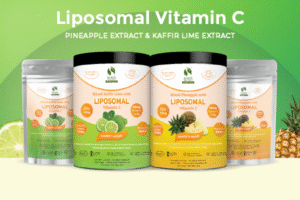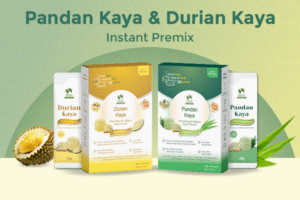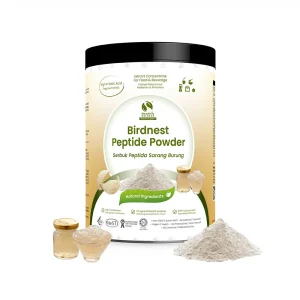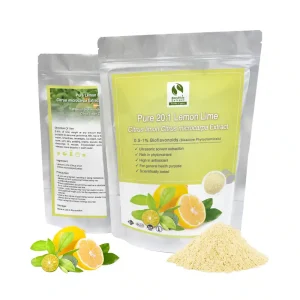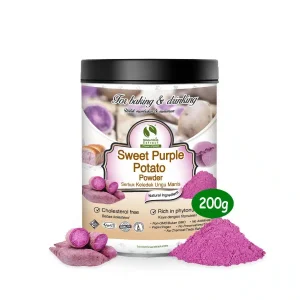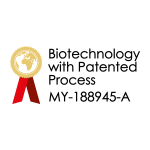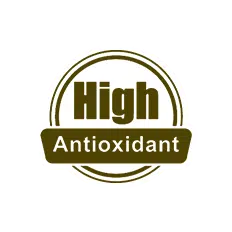Food as Medicine: Black Currant (Ribes nigrum, Grossulariaceae)
Editor’s note: In the Food as Medicine article series, HerbalEGram highlights a conventional food and briefly explores its history, traditional uses, nutritional profile, and modern medicinal research. Each article also features a nutritious recipe for an easy-to-prepare dish to encourage readers to experience the extensive benefits of these whole foods. With this series, we hope our readers will gain a new appreciation for the foods they see at the supermarket and frequently include in their diets.
By Hannah Bauman
Overview
Ribes nigrum (Grossulariaceae), commonly known as black currant, blackcurrant, and cassis, is a fruit-producing shrub grown primarily for its Black currant fruit dark purple berries (currants). The berries are astringent and tart with a high pectin and acid content. Native to temperate regions in northern Europe and Asia, black currant bushes are also grown as hedgerows or natural barriers. The bush produces medium-sized, aromatic green leaves with 3-5 lobes. Small, yellowish-green flowers appear in racemes in the spring, which then produce long clusters of currants that ripen in early summer. The flowers attract butterflies, and the berries attract birds and deer.
Ribes is the only genus in the Grossulariaceae family and includes approximately 200 known species. Popular species include red currant (R. rubrum), white currant (R. rubrum cultivar), gooseberry (R. uva-crispa), and American black currant (R. americanum). Fruits from this genus should not be confused with the dried currants used in culinary applications such as Zante currants, which are a variety of dried grape (Vitis vinifera, Vitaceae).
Historical and Commercial Uses
Black currant cultivation in Europe began at the end of the 17th century. Black currant juice was used for a variety of inflammatory conditions such as fevers and sore throat as well as “calculous affections” (the formation of mineral stones in organs such as kidney and gall stones) and edema (swelling caused by fluid retention). North America has several native Ribes species known as black currant that were used for food and medicine. European settlers used the black currant plant in a similar fashion to Native American tribes: an infusion of leaves was used as a diuretic; an infusion of roots was used to treat fever in livestock; and a decoction of bark was used for stones, edema, and hemorrhoids. In addition, the juice was used as a diuretic and diaphoretic (sweat inducer). Black currants were also an ingredient in pemmican, a calorie-rich food product made from tallow, dried meat, and dried berries favored by Indigenous tribes in northern and central North America. Black currant seed oil is currently used in cosmetics as an emollient.
Following the discovery that the black currant plant was a vector for the devastating white pine blister rust fungus (Cronartium ribicola), the lucrative US logging industry successfully lobbied to have currant cultivation banned in 1911. The federal ban stayed in place for 55 years and as a result, the popularity and availability of black currant plummeted in the United States. Though the federal ban was lifted in 1966, many states retained the ban, and as of September 2021, R. nigrum growing prohibitions are still in place in Maine, Massachusetts, Michigan, New Hampshire, parts of New Jersey and New York, North Carolina, Ohio, Rhode Island, Virginia, and West Virginia. However, in states that have lifted these restrictions, a burgeoning commercial black currant industry has started to grow in Connecticut, downstate New York, Oregon, and Vermont.
In Europe, the popularity of black currant has never wavered, and it is used in jams, jellies, syrups, wines, and drink mixes. It is the primary flavoring of crème de cassis liqueur, which is used in the Kir Royale champagne cocktail. While purple Skittles® candies are grape flavored in North America, European purple Skittles are black currant flavored, instead. Poland is currently the largest producer of black currants, followed by Ukraine and the United Kingdom.9 Approximately two-thirds of the global harvest of currants is used for juice production.
Black currant fruit is especially popular in the United Kingdom, likely due to a government initiative to combat childhood nutrient deficiencies during fruit shortages in World War II. In 1939, in response to the difficulties in obtaining imported fruit high in vitamin C, the British government encouraged black currant cultivation, as it was suited to the climate, and distributed free black currant syrup to children.
The use of black currant-flavored lozenges for dry mouth and sore throat is popular in several European countries and Australia. However, the benefits of these lozenges are likely due to the presence of glycerin or other mucilaginous or antiseptic ingredients.
The young leaves of the black currant plant can be brewed and consumed as a tea, similar to raspberry (Rubus idaeus, Rosaceae) leaves. They can also be added as a flavoring to black or green tea (Camellia sinensis, Theaceae) or, as is the case in Siberia, alcohol. The leaves and berries are also sources of dye; the leaves produce a yellow dye, and the berries produce a blue or violet dye.
Phytochemicals and Constituents
Black currants have a high anthocyanin content, which is the focus of modern research. The berries are also a good source of vitamins and minerals, including vitamin C, potassium, fiber, and calcium.11 Secondary phytochemicals in black currants include alpha-linoleic acid, beta-pinene, citric acid, fructose, linoleic acid, and sucrose. (Table 1) Black currants are also high in pectin.
Table 1. Nutrients and Bioactive Compounds in Black Currant
| Phytochemical | Compound Type | Plant Part | Associated Properties |
| Alpha-linoleic acid | Omega-3 fatty acid | Seeds | Anti-inflammatory, cardioprotective, immunomodulatory |
| Beta-pinene | Monoterpene | Fruit | Antibiotic, antimicrobial, aromatic, cytotoxic |
| Caryophyllene | Sesquiterpene | Fruit, leaf | Antifungal, anti-inflammatory, antimalarial |
| Cyanidin-3-O-glucoside, cyanidin-3-O-rutinoside, delphinidin-3-O-glucoside, and delphinidin-3-O-rutinoside | Anthocyanins | Fruit | Antioxidant, cytotoxic, neuroprotective |
| Citric acid | Acid | Fruit | Chelating agent, fatty acid synthesis modulator, preservative |
Anthocyanins are a class of pigment compounds responsible for the deep purple, blue, and red colors of foods such as berries, pomegranate (Punica granatum, Lythraceae), and eggplant (Solanum melongena, Solanaceae), among others. These compounds are speculated to act as defense mechanisms that repel herbivores, attract pollinators, and protect against stressors. Anthocyanin content can vary by cultivar and growing conditions, but antioxidant activity in black currants is higher than that of the synthetic antioxidant butylated hydroxytoluene, blueberries (Vaccinium spp., Ericaceae), and elder berry (Sambucus nigra, Sambucaceae), due in part to its high content of anthocyanin and other polyphenols. The major anthocyanins in black currant fruit are delphinidin-3-O-rutinoside, cyanidin-3-O-rutinoside, delphinidin-3-O-glucoside, and cyanidin-3-O-glucoside.
In human health, anthocyanins have high antioxidant activity, scavenging free radicals and preventing cell oxidation. Anthocyanins have been shown in vitro to inhibit the production of inflammatory cytokines and nitric oxide, which has implications for inflammatory conditions including asthma, cardiovascular disease, diabetes, obesity, and pain management. Other compounds in black currant such as stilbenes, ellagitannins, and phenolic acids may work synergistically with anthocyanins, which have a low bioavailability and tend to degrade rapidly when exposed to heat or oxygen.
Modern Research and Potential Health Benefits
Much of the modern research on black currant focuses on inflammatory conditions due to the high anthocyanin content of the berries. The antioxidant capacity of black currant has been assessed in vitro, in animal studies, and in limited human trials. More studies are needed to fully explore and elucidate the effects of black currants in humans.
Inflammatory Conditions
In young, healthy subjects, black currant extract (BCE) supplementation did not affect serum triglyceride levels but significantly decreased total cholesterol levels, possibly by increasing the expression of low-density lipoprotein (LDL) receptors. An increased number of LDL receptors may help to remove more cholesterol from the bloodstream and thus maintain healthier cholesterol levels. Anthocyanins such as those in black currant also inhibit the absorption of cholesterol from the intestinal tract. High LDL cholesterol levels are correlated with an increased risk of atherosclerosis. This has been more thoroughly explored in animal studies, where BCE supplementation has been associated with improvements in dyslipidemia and hypoglycemic effects.
Metabolic syndrome is a combination of conditions including glucose intolerance, insulin resistance, and hypertension that lead to an increased risk of heart disease and type 2 diabetes. These risk factors may be moderated by consumption of black currant products. The anthocyanins in black currant have been observed to regulate the inflammatory factors associated with obesity, which is another risk factor in metabolic syndrome.
Patients with asthma, a chronic condition characterized by inflammation of air pathways, may also benefit from black currant supplementation. Black currant juice and extract have been shown to down-regulate inflammatory cytokines in human lung cells.
Athletic Performance
Black currant and BCE have been shown to reduce oxidative stress-induced injuries in human and animal studies and reduce fatigue in athletes in small clinical trials. Male cyclists who supplemented with BCE daily reported a significant decrease in arterial pressure and total peripheral resistance (a measure of blood flow resistance), and female cyclists reported increased mean fat oxidation after BCE consumption compared to placebo. Other human studies suggest that BCE consumption is correlated with an increase in modulation of blood flow and regulation of blood glucose.
Eye Health
Anthocyanins from black currant juice were confirmed to cross blood-retinal and blood-aqueous barriers in animal studies; coupled with the observation that black currant juice powder raised the levels of anthocyanins found in different parts of the eye and the ability of flavonoids to protect retinal cells, this suggests that black currant products may be useful in the management of some ophthalmological diseases.
Nutrient Profile
Per 100 g (approximately 1 cup) of fruit
Macronutrients:
63 calories
1.4 g protein
15.4 g carbohydrates
0.4 g fat
Secondary Metabolites:
Excellent source of:
Vitamin C: 181 mg (201.1% DV)
Very good source of:
Dietary Fiber: 6.8 g (22.7% DV)
Manganese: 0.26 mg (11.3% DV)
Good source of:
Pantothenic acid (Vitamin B5): 0.4 mg (8% DV)
Iron: 1.4 mg (7.8% DV)
Magnesium: 24 mg (5.7% DV)
Potassium: 322 mg (6.9% DV)
Vitamin E: 1 mg (6.7% DV)
Thiamin (Vitamin B1): 0.05 mg (4.2% DV)
Also provides:
Phosphorus: 59 mg (4.7% DV)
Calcium: 55 mg (4.2% DV)
Pyridoxine (Vitamin B6): 0.07 mg (4.1% DV)
Riboflavin (Vitamin B2): 0.05 mg (3.8% DV)
Zinc: 0.27 mg (3.4% DV)
Niacin (Vitamin B3): 0.3 mg (1.9% DV)
Vitamin A: 12 mcg (1.3% DV)
DV = Daily Value as established by the US Food and Drug Administration, based on a 2,000-calorie diet.
|
Recipe: Black Currant Jam Ingredients:
Directions:
|
References
- Ribes nigrum ‘Ben Sarek.’ Missouri Botanical Garden website. Available at: www.missouribotanicalgarden.org/PlantFinder/PlantFinderDetails.aspx?taxonid=257221&isprofile=0&pt=7. Accessed August 17, 2021.
- Felter HW, Lloyd JU. King’s American Dispensatory. 18th ed. 3rd rev. Vol. 1. Cincinnati, OH: The Ohio Valley Company; 1898.
- Grieve M. A Modern Herbal: The Medicinal, Culinary, Cosmetic and Economic Properties, Cultivation and Folk-Lore of Herbs, Grasses, Fungi, Shrubs & Trees with their Modern Scientific Uses. New York, NY: Harcourt, Brace & Co.; 1931.
- Lim TK. Edible Medicinal and Non-Medicinal Plants: Volume 4, Fruits, Edible Medicinal and Non-medicinal Plants. New York, NY: Springer Science & Business Media; 2012.
- McGlynn P. Welcome Back Black Currants: Forbidden Fruit Making a Comeback in New York. Cornell Chronicle. July 26, 2006. Available at: https://news.cornell.edu/stories/2006/07/welcome-back-black-currants-forbidden-fruit-making-ny-comeback. Accessed September 23, 2021.
- Ribes. Wikipedia.org. Available at: https://en.wikipedia.org/wiki/Ribes#United_States_of_America. Accessed September 23, 2021.
- Spector D. There’s an Intriguing Reason Why 99.9% of Americans Have Never Tasted Blackcurrant but Europeans Love It. Business Insider. October 14, 2016. Available at: www.businessinsider.com/blackcurrant-america-vs-europe-2016-10. Accessed August 25, 2021.
- Taylor K. Purple Skittles Taste Completely Different Outside the US — and the American Government Is to Blame. Business Insider. September 9, 2016. Available at: www.businessinsider.com/purple-skittles-taste-like-black-currant-outside-us-2016-9. Accessed August 25, 2021.
- Cortez RE, Gonzalez de Mejia E. Blackcurrants (Ribes nigrum): A review on chemistry, processing, and health benefits. Journal of Food Science. 2019;84(9):2387-2401.
- Early History. Ribena website. Available at: www.ribena.co.uk/blog/heritage/early-history/5436/. Accessed September 21, 2021.
- Duke J. Ribes nigrum (Grossulariaceae). Duke’s Phytochemical and Ethnobotanical Databases. US Department of Agriculture website. Available at: https://phytochem.nal.usda.gov/phytochem/plants/show/1701?part=24&_ubiq=&ubiq=on. Accessed August 25, 2021.
- Russo E. Taming THC: Potential cannabis synergy and phytocannabinoid-terpenoid entourage effects. British Journal of Pharmacology. 2011;163(7):1344-1364.
- Russo E, Marcu J. Cannabis Pharmacology: The Usual Suspects and a Few Promising Leads. In: Kendall D, Alexander SPH, eds. Advances in Pharmacology. 2017;80:67-134.
- Zhang J, Celli GB, Brooks MS. Natural Sources of Anthocyanins. In: Brooks MS, Celli GB, eds. Anthocyanins from Natural Sources: Exploiting Targeted Delivery for Improved Health. London, UK: Royal Society of Chemistry; 2019:1-33.
- Anisimovienė N, Jankauskienė J, Jodinskienė M, Bendokas V, Stanys V, Šikšnianas T. Phenolics, antioxidative activity and characterization of anthocyanins in berries of blackcurrant interspecific hybrids. Acta Biochimica Polonica. 2013;60(4):767-772.
- Lee Y, Lee JY. Blackcurrant (Ribes nigrum) extract exerts an anti-inflammatory action by modulating macrophage phenotypes. Nutrients. 2019;11(5):975. doi: 10.3390/nu11050975.
- Nanashima N, Horie K, Kitajima M, et al. Hypocholesterolemic effect of blackcurrant (Ribes nigrum) extract in healthy female subjects: A pilot study. Molecules. 2021;26(13):4085.
- Haswell C, Ajmol A, Page R, Hurst R, Rutherfurd-Markwick K. Potential of beetroot and blackcurrant compounds to improve metabolic syndrome risk factors. Metabolites. 2021;11(6):338.
- Lee YM, Yoon Y, Yoon H, Park HM, Song S, Yeum KJ. Dietary anthocyanins against obesity and inflammation. Nutrients. 2017;9(10):1089. doi: 10.3390/nu9101089.
- Nyanhanda T, Gould EM, McGhie T, Shaw OM, Harper JL, Hurst RD. Blackcurrant cultivar polyphenolic extracts suppress CCL26 secretion from alveolar epithelial cells. Food and Function. 2014;5(4):671-677.
- Shaw OM, Nyanhanda T, McGhie TK, Harper JL, Hurst RD. Blackcurrant anthocyanins modulate CCL11 secretion and suppress allergic airway inflammation. Molecular Nutrition and Food Research. 2017;61(9).
- Matsumoto H, Nakamura Y, Iida H, Ito K, Ohguro H. Comparative assessment of distribution of blackcurrant anthocyanins in rabbit and rat ocular tissues. Experimental Eye Research. 2006;83(2):348-356.
- Weber MT, Hannig M, Pötschke S, Höhne F, Hannig C. Application of plant extracts for the prevention of dental erosion: An in situ/in vitro study. Caries Research. 2015;49:477-487.
- Desjardins J, Tanabe S, Bergeron C, Gafner S, Grenier D. Anthocyanin-rich black currant extract and cyanidin-3-O-glucoside have cytoprotective and anti-inflammatory properties. Journal of Medicinal Food. 2012;15(12):1045-1050.
- Caruso M, Frasca G, Di Giuseppe PL, Pennisi A, Tringali G, Bonina FP. Effects of a new nutraceutical ingredient on allergen-induced sulphidoleukotrienes production and CD63 expression in allergic subjects. International Immunopharmocology. 2008;8(13-14):1781-1786.
- Currants, European black, raw. FoodData Central. USDA Agricultural Research Service website. April 1, 2019. Available at: https://fdc.nal.usda.gov/fdc-app.html#/food-details/173963/nutrients. Accessed September 23, 2021.
- Lebovitz D. Black Currant Jam. David Lebovitz website. August 21, 2013. Available at: www.davidlebovitz.com/black-currant-jam-recipe/. Accessed September 23, 2021.



